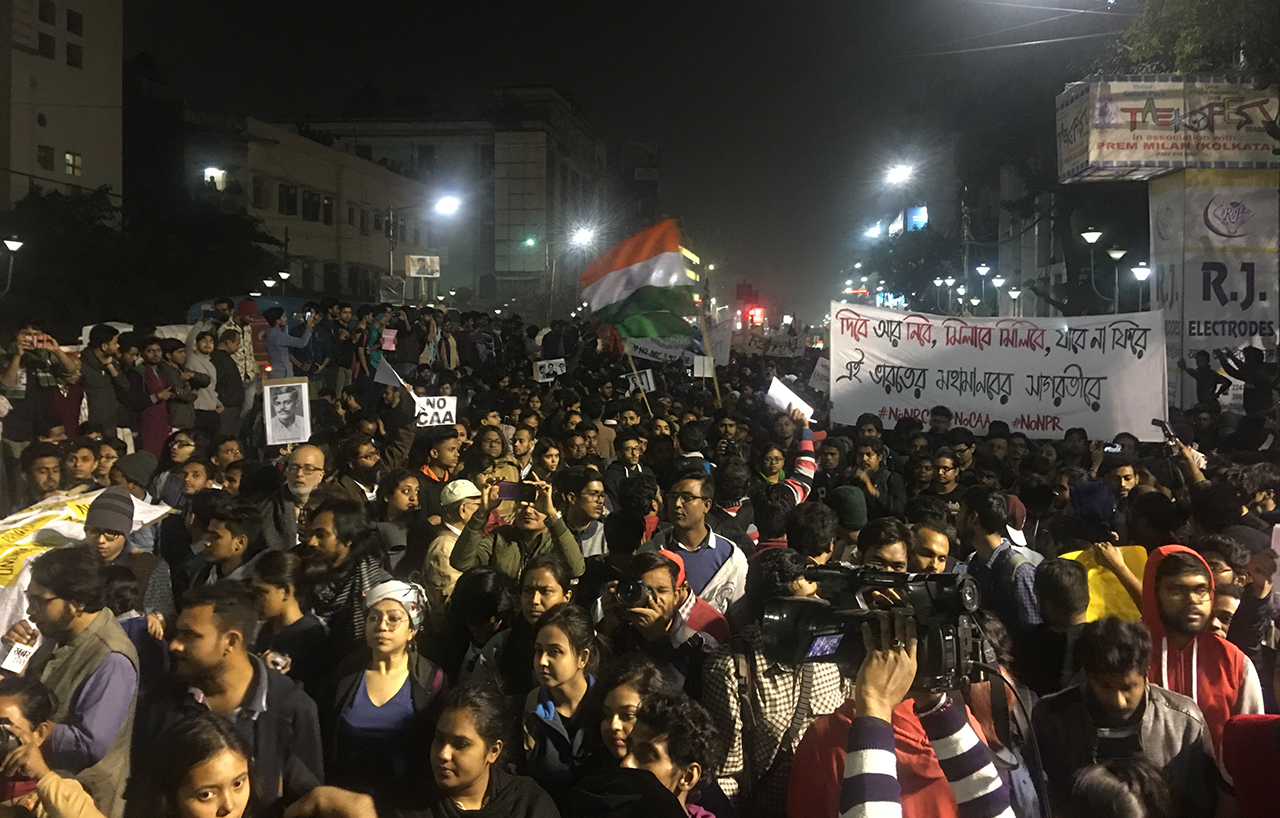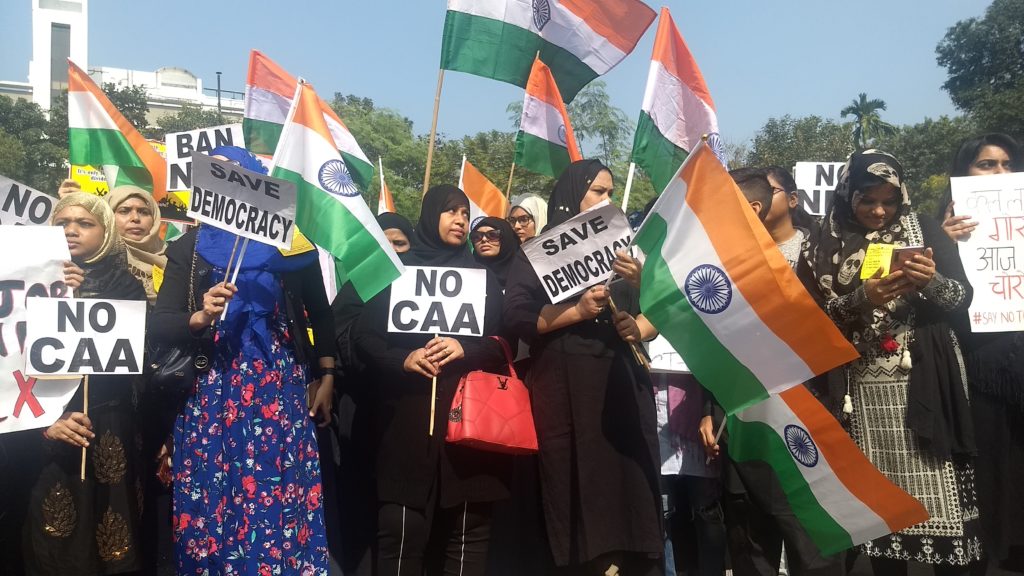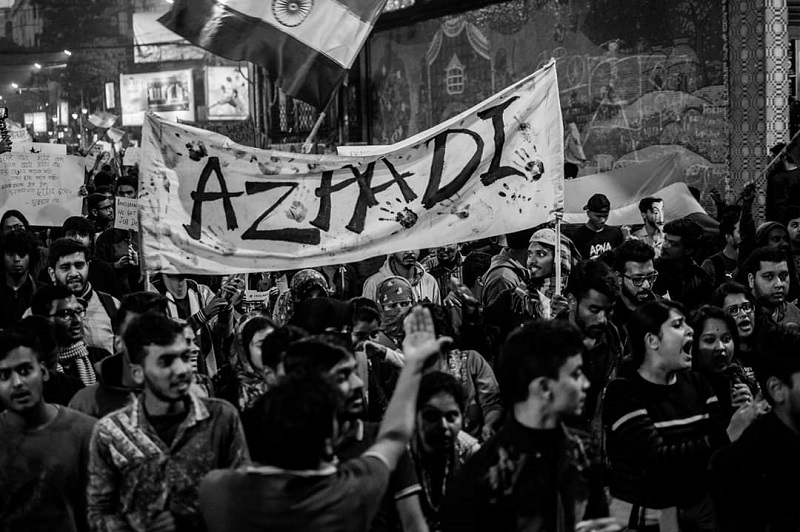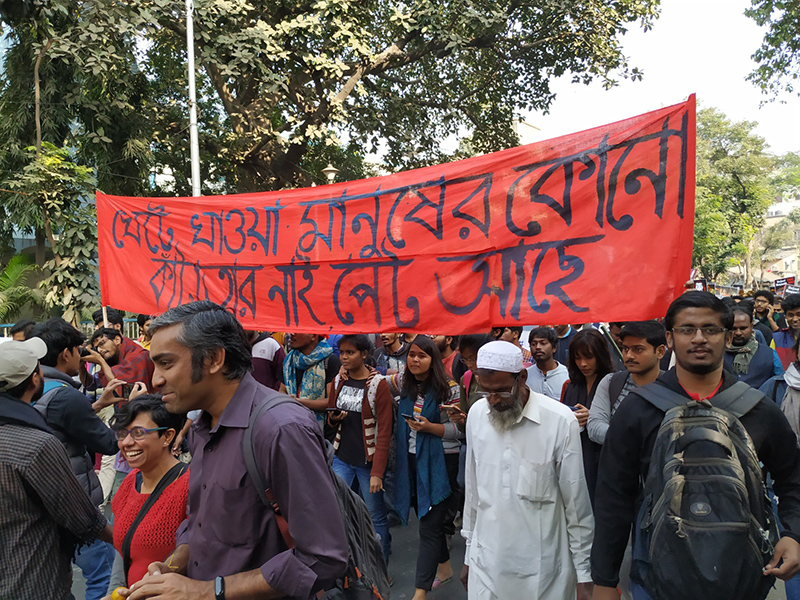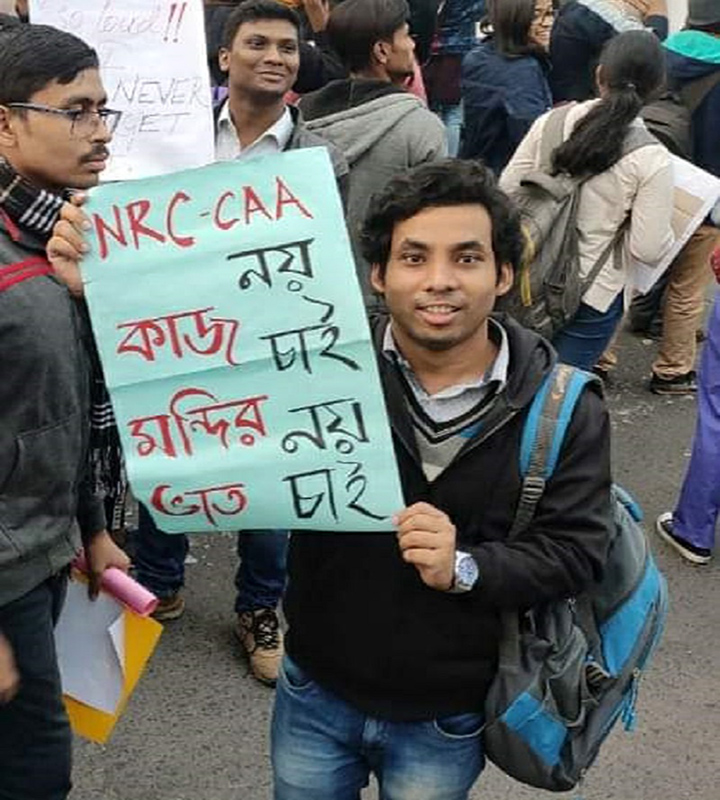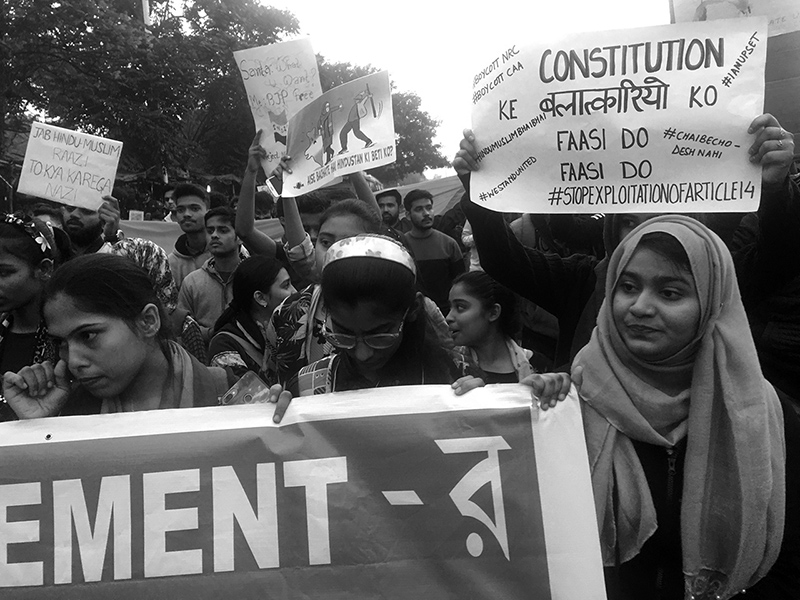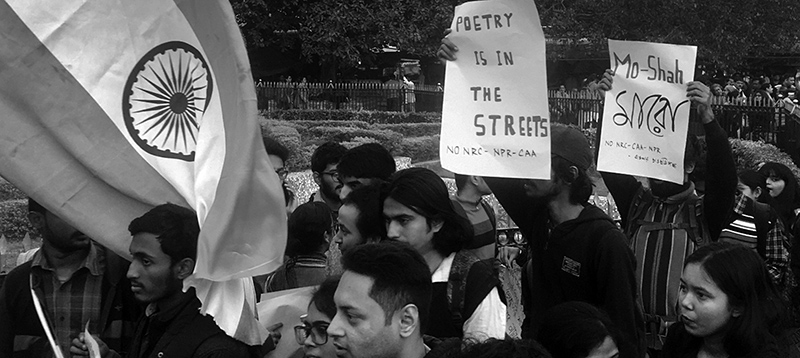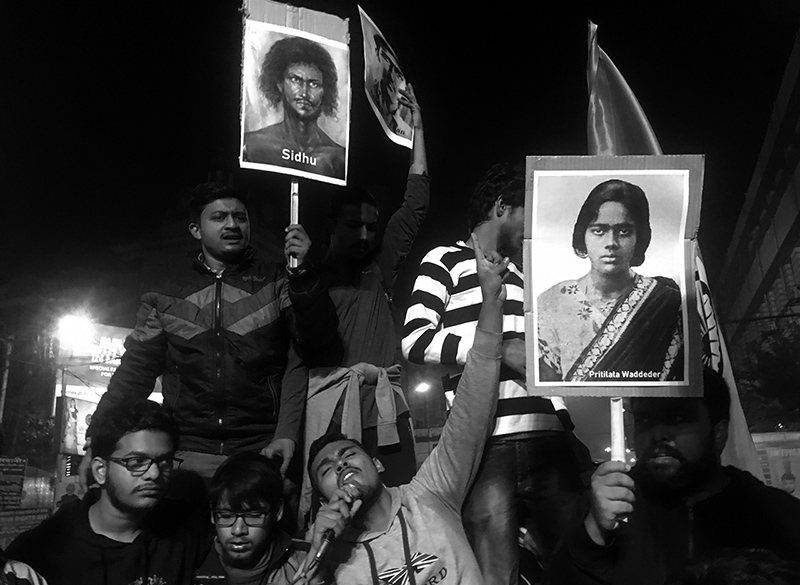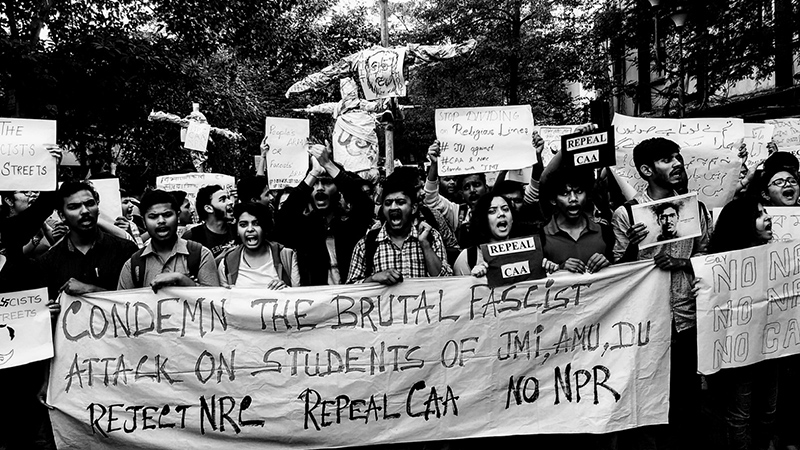The impressive shows of massive solidarity rallies held recently in Kolkata have enthused and reassured many participants, among them political and social activists. But the fault lines in West Bengal are too wide to ignore. There is hardly any participation from trade unions and farmer’s organisations in these protests. The vocal support of the CAA and NRC among the Dalits (mainly Namasudras), as well as Hindi-speaking populations from industrial areas are worrying signs since they both are the main constituency for Hindutva politics in the state, writes Biswajit Roy.
The political landscape of West Bengal is witnessing a welcome change as more and more people are turning up for non-partisan mobilizations against the recently passed Citizenship Amendment Act (CAA) and the proposed National Register of Citizens (NRC) by Narendra Modi-Amit Shah regime. The fractured opposition is yet to come up with a united show of mass anger against these projects. The BJP government’s dual project of CAA-NRC is meant to exclude Muslim ‘infiltrators’ and to expedite the acquiring of citizenship by non-Muslim refugees from the three neighboring Islamic countries, and is a giant step towards Sangh Parivar’s cherished dream of a Hindu Rastra. It is the latest attack on the constitutional edifice of India’s secular democracy, and is fraught with many incongruities. While Muslims are at the forefront of the protests and street battles with police, urban student and youth groups across communities as well as some groups of Dalits and women have also joined the resistance across the country.
Thousands of concerned citizens are marching together daily, cutting across political ideologies and religious faiths, languages and generations and across the gender divide in national and state capitals as well as district cities. As campus protests have spilled over onto the streets and merged with minority and Dalit social-political mobilisations, the increasingly grave threats to the pluralistic national fabric by Hitler-inspired Hindutva majoritarianism have alarmed even the hitherto apolitical teens and middle-aged professionals out of their ‘cosy bubbles’. Veteran Left and liberal political activists are walking together irrespective of their party or mass organization tags.
However, it is too early to vouch for the sustainability of these social-political efforts to create an independent civil society space. Past experiences during the Singur-Nandigram days shows both the birth of civil society movement in Bengal and ultimately its appropriation by Mamata Banerjee and her minions. Rancours and differences among activist groups, which are often less ideological and more egotistical, are recurring hurdles for the sustainability of such social-political efforts to build an independent civil society space. The separate anti CAA-NRC protest rallies held by the ruling Trinamool Congress as well as 17-party Left alliances and Congress pointed to the mutual acrimony among anti-BJP forces which is less about ideology or an anti-Sangh strategy and more about electoral rivalry. Notwithstanding, the coordination among the three parties against the Modi Government on the floor of the Parliament, they won’t join hands in Bengal against CAA-NRC and the National Population Register (NPR), widely perceived as a prelude to NRC. Their rallies are more focussed on widening their respective party bases before the upcoming municipal and assembly polls even as resurgence of BJP in West Bengal has dwindled the LF-Congress catchment area further while threatening TMC’s hegemony.
The traditions of pluralist India celebrated
On 9 December, the day BJP government passed the divisive CAA in the Parliament using it’s brute majority, protestors in Kolkata converged at a rally organised by the Joint Forum of Anti-CAA, Anti-NRC groups after an arduous campaign across the state. The JNU student icon Kanhaiya Kumar and dissident IAS officer Kannan Gopinathan were among the speakers who exposed the Modi regime’s divisive politics aiming to divert popular attention from economic miseries. Pluralist greetings and slogans like ‘Lal Salam, Nil Salam’, ‘Jai Hind, Jai Bhim, Hul Johar’, ‘Inquilab Zindabad’, ‘Jai Bharat, Jai Bangla’ were raised amid the invocations of Gandhi and Ambedkar, Tagore and Subhas Bose underlining the new political-ideological imagination that was not part of West Bengal’s traditional political lexicon and iconography.
Commemorating the martyrdom of freedom fighters and friends Ram Prasad Bismil and Asfaqullah Khan on December 19, a citizens’ march was called by the NO CAA NO NRC Movement, an umbrella forum of activist groups. It was evidently different from the political party held rallies not only in footfall but also in spontaneity, spirit and its pluralistic underpinnings. They voiced their anger against the twin projects that aims to institutionalise religion-based citizenship in the country.
The rally-goers called the Modi-Shah duo ‘Urban Nazis’ mimicking the BJP top guns who had dubbed such protests as the handiwork of ‘Urban Naxals’. But the texture and temperament of the rally even astonished many parliamentary Left and revolutionary radicals as they witnessed the waves of Indian tricolors interspersed with red and black flags across the mammoth gathering. The chants of ‘Vande Mataram’ rented the air together with ‘Inquilab Zindabad’. It is not an everyday spectacle in politically pigeonholed Kolkata. Most of them initially felt awkward and confused on missing the usually exclusive signature slogans and flags at rallies in West Bengal, but were awed after witnessing the swelling masses and their spirit of bonhomie across the social-political fault lines.
However, it was the stirring refrains for ‘Azadi’ from the CAA-NRC and economic mess among other ills of the misgovernance; these calls originated in Kashmir and were popularised in the mainland by JNU students, and dubbed ‘anti-national’ by the saffron brigade. These calls found more rhythmic resonance with local variations. Posters and festoons depicting the icons of inclusive India and Bengal including Swami Vivekananda, Rabindranath Tagore, Netaji Subhas as well as Mahatma Gandhi and B R Ambedkar were displayed while many others caricatured Modi and Shah.
The forgotten Class politics
The class politics which is now weak even in the former Left citadel of Bengal, found expressions in posters and slogans. ‘Roti-Kapda-Makan’ issues as well as the criticism of the crony corporate raj were underlined with these banters– ‘Garib mere Banay desh, Modi aar RSS’ and ‘Ambani aar Adani, challay Modi company’. Students wrote on the road– ‘Jaat nay, Bhaat de‘ along with ‘No CAA, No NRC’.
The most radical departure from the Hindutva brigade’s hysteria against ‘ínfiltration’ from Bangladesh was found in a quiet reminder of the age old truth written on a festoon: “Gariberer Nei kono Kantatar, acche pet’. The assertion of primacy of hunger over border walls and barbed wires was a heartening break at a time when ultra-right, racist regimes across the globe are busy making immigrants scapegoats to divert the homegrown anger against the rulers who are in league with the corporate behemoths to plunder the local wealth and national resources. The watchdog-turned lapdogs of the regime in media were also not spared: ‘Modi media sharam koro, Godi media sharam koro’.
Across the political divide
Post-partition Bengal has mostly seen nationalists of Congress hues and Reds of different denominations at loggerheads, demonizing and killing each others during their successive rules. The Congress tradition of coercive hegemony was widened by the CPM. The TMC is no exception. In this backdrop, the joining of the SFI members from Presidency University in the non-party rally was significant.
“Our ideo-political differences notwithstanding, all secular and democratic forces must unite against the Hindutva fascism. This is the clarion call of the hour. We have nothing to fear because BJP stands to lose by this citizens resistance,” said Souren Mallick, the general secretary of the Presidency University students union, apparently admitting the dwindled influence of the CPM and its student wing following the demise of the LF rule. Pointing to the absence of party flags and festoons in the rally, SFI unit president Debnil Pal added: “This has helped us to join. A united fight against the looming threat of a theocratic state in India must emerge.’’ Pratima Mazumder, an elderly lady walking with sticks is not a greenhorn in political rallies. But she no longer cares for political correctness. “I was a leftist in my youth as most of the people of my generation. But now I join rallies that focus on people’s cause without partisan motives,” she said before moving ahead.
Greenhorns
In contrast, Rabia Khan, an Urdu-speaking Chartered Accountant student said she has no political affiliation. Nevertheless, she had marched with Mamata’s supporters the other day. “I know many of my co-marchers do not like the chief minister. But this is not the time for mutual bickering and all should come together against the real anti-national forces,” she said amid deafening slogans. Burqua and hijab-clad students from Bowbazar Loreto School marched for the first time today. “I am proud of Bengal that so many non-Muslims have turned up to foil Modi-Shah’s design to divide Hindu and Muslims again”, said Ramsha Mehtab, a student of class XII.
Not only the city campuses, but local students from universities in Haryana and Karnataka as well as young professionals too joined in protest against police brutalities on Jamia Milia and AMU students. Ashoka University students on the winter break as well as Bangalore-based students narrated their experiences of campus vigilantism and social media trolls. Members of the AMU Old Boys Association came out in numbers with women alumni from different walks of life. “How can we stay back at home when our children are being brutalized for protesting the sinister laws?” said Attaullah Khan, its Association’s president.
Students March
Similar was the spirit and texture of the massive student march on 21 December, called by the students of Jadavpur, Presidency, Viswa Bharati and Alia Universities. Beginning from the historic Shahid Minar, the huge rally marched through Central Avenue and ended near Mahajati Sadan. The rally passed by the BJP state headquarters, situated in a lane beside Central Avenue. Bengali Hindus and Muslims as well as students from the Sikh and Christian communities walked hand in hand unfurling the national flag as well as Red flags. Posters depicting Bhagat Singh, and Birsa Munda as well as Bengali martyrs Binoy-Badal-Dinesh, the heroes of anti-colonial struggles, whose legacy was invoked to stir people to join the ‘second freedom’ struggle.
Many non-students, including guardians and elderly people, too, joined the march. Local media carried a heartwarming photo of an octogenarian on the street raising his clenched fist in solidarity with the marchers. Muslim shopkeepers distributed water bottles and cakes among the participants in keeping with festive mood of Christmas, only a few days away, in the city.
The participants at the rally displayed placards and festoons urging onlookers to boycott CAA-NRC while taking vows not to submit documents to ensure their citizenship. All of them condemned the police brutalities on Jamia Millia and AMU students as well as the killing of protestors in police firing in BJP-ruled states, particularly Uttar Pradesh.
The faultlines
The impressive shows of solidarity were reassuring for many participants. But the fault lines are too wide to ignore. There was hardly any participation from organised labour and farmer’s organisations. Although, the central trade unions barring BJP’s labour wing have decided to oppose the CAA-NRC, they have been lukewarm in their response to the ongoing divisive communal campaign over citizenship.
A Bengal-specific deficit was the near-total absence of Hindi-speaking Hindus from industrial areas as well as Dalits from bordering districts, both the main constituency for Hindutva politics who had been pitted against Muslims in the communal clashes over the last few years. While the closed and sick mills have rusted the industrial workers life and its ethos, bigoted north Indian politics have further corroded the idea of class unity. Both the BJP and the TMC have harvested this mutual hatred and fears at the cost of Bengal’s post-partition social fabric.
A huge chunk of Dalits, mainly Namashudras who had fled Bangladesh between the seventies and nineties during the military regime and BNP-Jamat rule there have warmed up to the BJP campaign for CAA that promises to fulfill their demands for hassle-free citizenship. The saffron camp has succeeded in dividing the presiding clan of the influential Matua sect of the ‘Namas’, hitherto a TMC vote bank and has won Lok Sabha seats dominated by the caste. The BJP is now hell bent on offsetting the electoral defeats suffered in its strongholds in the last assembly bypolls following the Assam NRC fiasco by aggressively selling the CAA.
Focussed civil society initiatives and campaigns are needed, to address the BJP’s core constituencies — the Dalits and the Hindi speaking population in the state.
The author is a journalist and social activist based in Kolkata.
The views and opinions expressed in the article are the author’s own.

